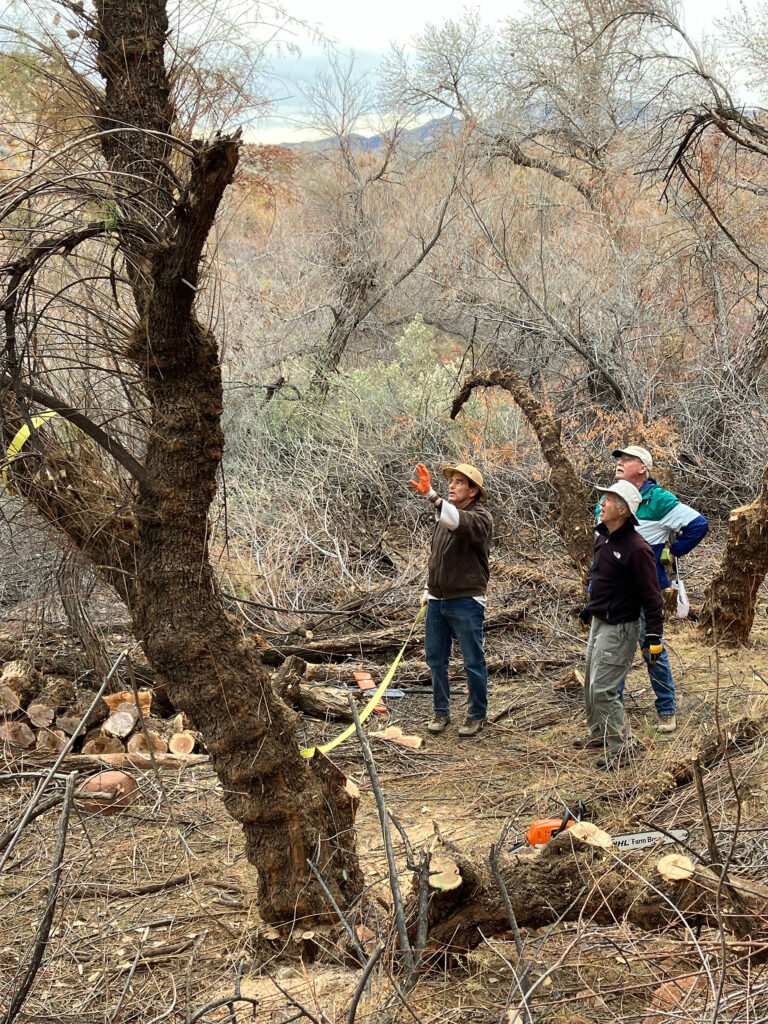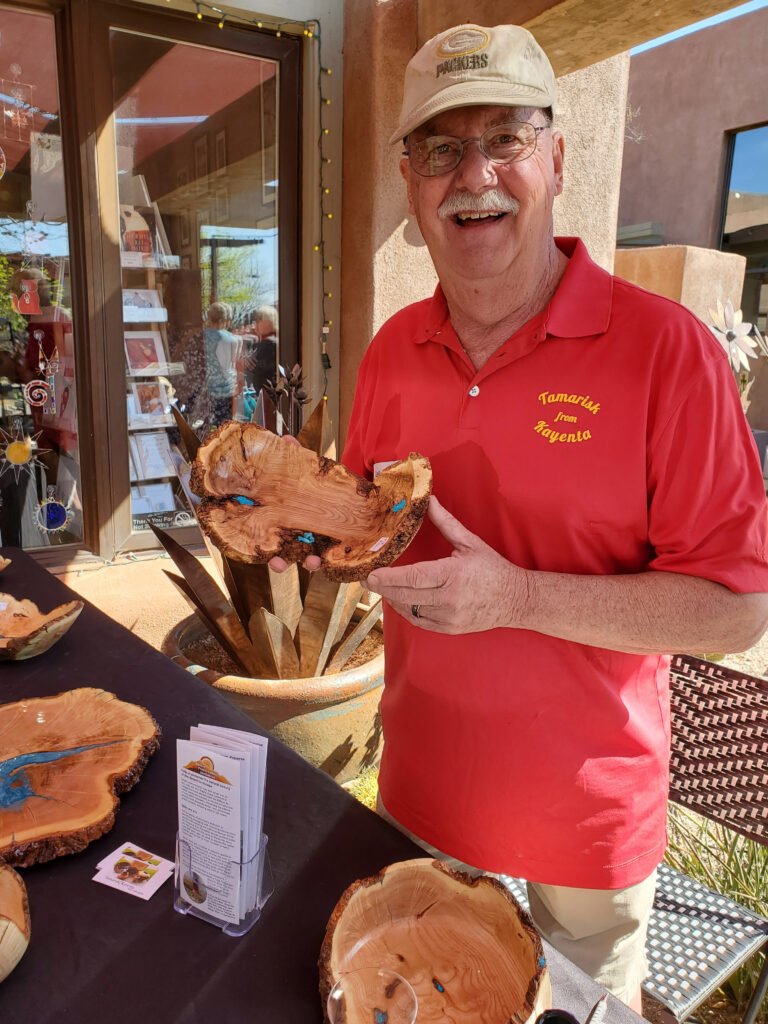
A Partnership Born of Intersecting Passions
A true partnership supports mutual benefit. Such is the collaboration between the Desert Preservation Initiative (DPI) and the Southern Utah Woodturners (SUW), where the work of preserving the natural habitat intersects with that of a group of talented artists who work in wood.
In recent weeks, as members of DPI cut and hauled limbs and trees as part of their effort to remove the invasive tamarisk from Kayenta in the City of Ivins, they were joined by Barry Gray and Ron Kirchen of SUW in tackling some of the larger trees, in particular what DPI President Chuck Warren dubbed “the mother tree,” one measuring nearly 50 feet tall and having a 51-inch circumference.
For the Woodturners, who often work with what Gray calls FOGwood, or wood “found on ground,” the chance to capture larger pieces of tamarisk was a real opportunity. Tamarisk is prized as a raw material for creating beautiful bowls, platters, and other wood pieces because of its graining and the natural twists and turns in the wood, according to Gray.
Kirchen, who often goes on “wood recovery” expeditions, joined Gray on the Kayenta project, bringing his skill in working with chainsaws and safely taking down large trees. He is also intrigued by the interesting colors and configurations, such as burls, in tamarisk, in “the god-given beauty of the wood.” Not knowing what’s inside, he says, there is a “discovery aspect as you find occlusions that add an artistic dimension to a piece.”
The partnership between SUW and DPI was born based on the experience of DPI Secretary Terrence Walters, who previously directed a large botanical garden in Coral Gables, Florida, home to some unique and extremely old African, Asia, and South American trees. When some of those trees were blown over by Florida storms, Walters would call on the South Florida Woodturners Guild, whose members were “thrilled to receive such highly sought-after species,” he says. Thus, when he learned that tamarisk was also prized by wood artisans, Walters wrote a letter to the officers of SUW.
“Within one day of receiving my letter, I had three SUW members on the phone ready to become part of DPI’s tamarisk removal project,” he says. “They also offered to assist us with cutting down trees. Their members are well-trained in chainsaw safety and usage, and we were delighted to have their help in hauling the trunks out of the ravine, and to see the cut trunks donated to their members.”
SUW Vice-President Bill Vincent shared the offer with woodturners from Las Vegas to Cedar City, noting that “tamarisk has a lot of character making it a nice choice for woodturning small items.” The advantage of obtaining the wood in log form allows the artist to cut it “to take advantage of the natural character of the wood such as the crotch and knots.”
Gray, who exhibits his work in local galleries and has won prizes in local art festivals and exhibitions, adds that tamarisk is a very figurative wood, but that it is rarely available in larger, 10-18” diameter pieces, hence the value of the DPI project to SUW members. As Gray says, quoting master turner Kurt Hertzog, “The magic is not in the hands or tools that we use, the magic is in what we find inside the wood.”
For more about the Southern Utah Woodturners, a club “dedicated to promoting woodturning in Southern Utah through educational demos, classes, and fellowship between members” whose motto is “Learning Through Turning,” see http://www.southernutahwoodturners.com/

